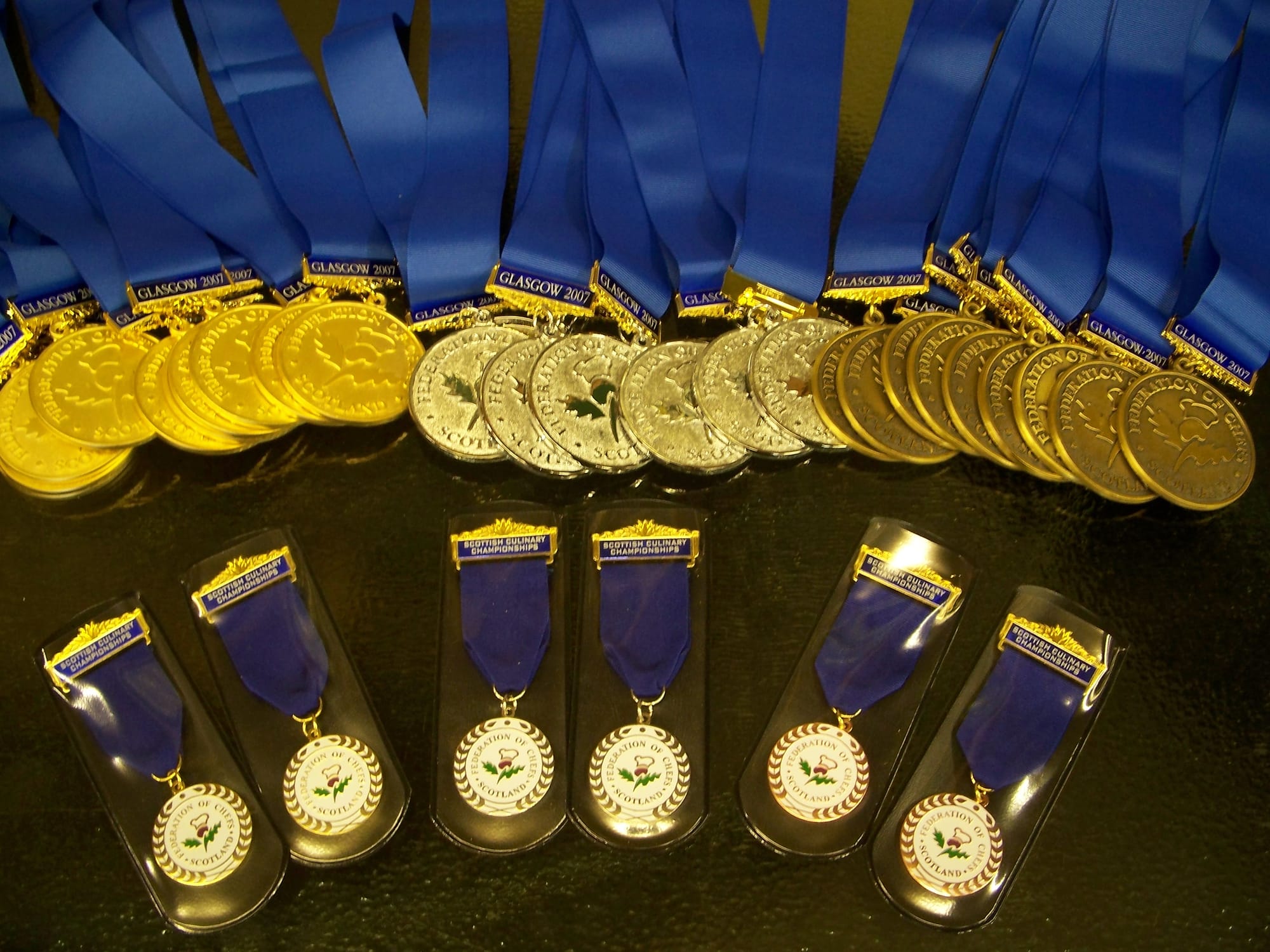The Craftsmanship Behind Sports Medals: From Raw Materials to Glorious Ribbons

Description
Exploring the intricate process of creating sports medals, from the selection of raw materials to the meticulous craftsmanship that culminates in the presentation of glorious ribbons.
Content The jubilant face of an athlete as they step onto the podium, the crowd roaring, the anthem playing, and a gleaming medal placed around their neck is an iconic triumphal moment we all dream of witnessing. As a young track and field contender, I've always been fascinated by the sheen and weight of a medal. Little did I know that a chance encounter with an artisan at a local fair would provide me with insights into the meticulous construction of these coveted accolades. Holding a medal in my palm that the craftsman had fashioned, I was struck by the feeling of its cool heft and the intricate detail that went into its making. This experience sowed the seeds of my curiosity, leading me down the path of understanding the craftsmanship behind sports medals, from the raw materials used to the glorious ribbons that suspend them.
The Journey Begins with Raw Materials
The creation of a sports medal begins with the selection of raw materials. Traditional metals such as gold, silver, and bronze are commonly used for first, second, and third places, respectively. However, the medals are typically not made of pure gold or silver but instead are cast from amalgams. Gold medals, for instance, are usually sterling silver coated with pure gold. Silver medals are predominantly made from the metal itself, and bronze medals are a combination of copper and tin or other metals, creating an alloy. Modern medals may also include materials such as glass, acrylic, or even recycled elements to promote sustainability.
Design Comes to Life
The design of a sports medal is a marriage of artistry and symbolism. Designers often incorporate elements that reflect the spirit of the competition, the heritage of the host city, or the ethos of the sport. Once a design is chosen, it is meticulously sculpted into a master model, usually from clay or wax. This master model is then used to create a mould, from which countless medals can be produced.
The Art of Casting
Casting is the next critical step in the life of a sports medal. Molten metal is poured into the prepared moulds—originating from the master design—and left to solidify. This step must be completed with precision, as any imperfections in the casting can mar the final appearance of the medal.
Revealing the Details
Once the casting is complete, the rough medals undergo a process of cleaning and polishing. Artisans painstakingly remove any excess material and polish each medal to a high sheen, a stage that allows the intricate details of the design to shine through. In some cases, additional elements are applied, such as colour fills or patinas, which enhance the medal's visual impact and depth.
Electroplating: The Gilding Touch
For medals that require a gold or silver finish, the process of electroplating is employed. This involves submerging the medals in a solution containing gold or silver particles and passing an electric current through it, causing the precious metals to adhere to the surface. The result is a thin, uniform coating that gives the medals their prestigious golden or silvery glow.
Lasers and Engraving In many competitions, specific details such as the event, year, and location are engraved onto each medal. Advanced laser technology has enabled finer, more accurate engravings, enhancing the personalized touch of each piece.

The Ribbons No medal would be complete without its ribbon, a piece that is often overlooked but carries great significance. The ribbon not only holds the medal but is also an opportunity to display additional colours, patterns, or symbols associated with the event. The material used for the ribbon is generally a soft, durable textile that can withstand the weight of the medal and the rigors of being worn during the athletes' celebrations. Ribbons may be dye-sublimated, a process allowing for vibrant, complex designs and crisp, lasting graphics.
Sustainable and Ethical Considerations
Quality Assurance Each medal goes through rigorous quality checks to ensure that only the best are awarded to the deserving athletes. Imperfections are not tolerated, and each medal must look and feel perfect in the hands of winners.
With a growing emphasis on sustainability, the production of sports medals has evolved to include environmentally friendly practices. Organizers of major events like the Olympics are increasingly using recycled materials, whether from electronic waste or older medals, to create new accolades. This push for eco-consciousness in medal production not only preserves precious resources but also sends a powerful message about the importance of environmental stewardship in sports.
The Craftsmen Behind the Scenes
Behind every medal is a team of skilled craftsmen and craftswomen, each a master of their trade. From the designers to the foundry workers and engravers, these artisans are the unsung heroes who work tirelessly to ensure that each medal reflects the glory of victory and the honour of athletic achievement. Their dedication to their craft is the difference between a mere trinket and a treasured symbol of success that athletes will cherish for a lifetime. The aforementioned chat with the artisan at the fair showed me that beyond the joy and pride of reaching a podium, there's a world rich with skill, precision, and artistic endeavour. The next time we see an athlete biting into their gleaming medal, let's remember the craftsmanship behind that fleeting moment of glory. For it's not just a piece of metal they're holding—it's a story of tradition, perseverance, and a tribute to human excellence.


